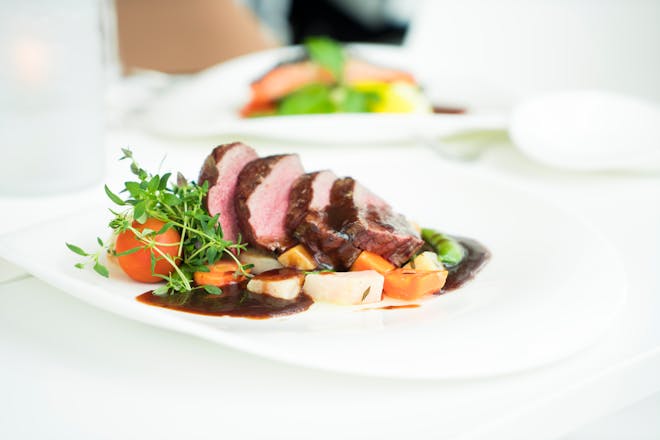Reverse Sear Bavette Steak: The Ultimate Guide
When it comes to cooking a reverse sear bavette steak, precision and technique are key to unlocking the full potential of this flavorful cut. In this comprehensive guide, we’ll delve into the steps to achieve a perfectly cooked bavette, using the reverse sear method to ensure a succulent and savory meal.
The Basics of Bavette Steak
Bavette steak, also known as flap meat, is a prized cut of beef known for its strong beefy flavor and fibrous texture. It is taken from the abdominal muscles of the cow, similar to flank steak but with a looser grain and more marbling. To maximize its tenderness and taste, the reverse sear technique is often recommended by culinary experts.
What is Reverse Sear?
The reverse sear method involves two main cooking stages. First, the steak is slowly roasted at a low temperature until it approaches the desired level of doneness. Following that, it is quickly seared on a hot surface to create a flavorful and crisp exterior. This technique offers superior control over the cooking process, ensuring the steak is cooked evenly from edge to edge.
Step-by-Step: Reverse Searing Bavette Steak
Ingredients:
– 1 Bavette steak, approximately 1 to 1.5 inches thick
– Salt, to taste
– Freshly ground black pepper, to taste
– High smoke point oil (e.g., canola, avocado, or grapeseed oil)
Preparation:
1. Begin by liberally seasoning the bavette steak with salt and allowing it to rest at room temperature for about 30 minutes to 1 hour. This helps to enhance the steak’s natural flavors and tenderize the meat.
2. Preheat your oven or smoker to a low temperature, typically around 225°F (107°C). This gentle cooking environment is crucial for the reverse sear process.
3. Place the seasoned bavette steak on a wire rack set over a baking sheet and insert a meat thermometer into the thickest part of the steak.
4. Roast the steak in the preheated oven until the internal temperature reaches approximately 10°F (6°C) below your target doneness. For medium-rare, aim for 120°F (49°C) before the sear.
5. Once the steak reaches the desired internal temperature, remove it from the oven and let it rest while you heat a cast-iron skillet or grill over high heat.
6. Add a small amount of high smoke point oil to the skillet and once it’s smoking hot, sear the bavette steak for about 1 to 2 minutes on each side, or until a dark, flavorful crust has formed.
7. Rest the steak for another 5 to 10 minutes before slicing against the grain to serve. This allows the juices to redistribute, ensuring a moist and tender bite.
Tips for a Perfect Reverse Sear
Use these additional tips to elevate your reverse sear bavette steak:
- Patience is Key: Don’t rush the initial low-temperature cooking phase. This is where the steak becomes evenly cooked and tender.
- Invest in a Good Thermometer: An accurate meat thermometer is vital for monitoring the steak’s internal temperature.
- Resting is Crucial: Always rest your steak both after the initial cook and after searing to ensure maximum juiciness.
After mastering the reverse sear technique, you’ll be able to apply it to other cuts of beef and enjoy steaks that rival the quality of those found in high-end steakhouses. The bavette steak, with its robust flavor and satisfying texture, is a prime candidate for this method, making every meal a memorable experience.
